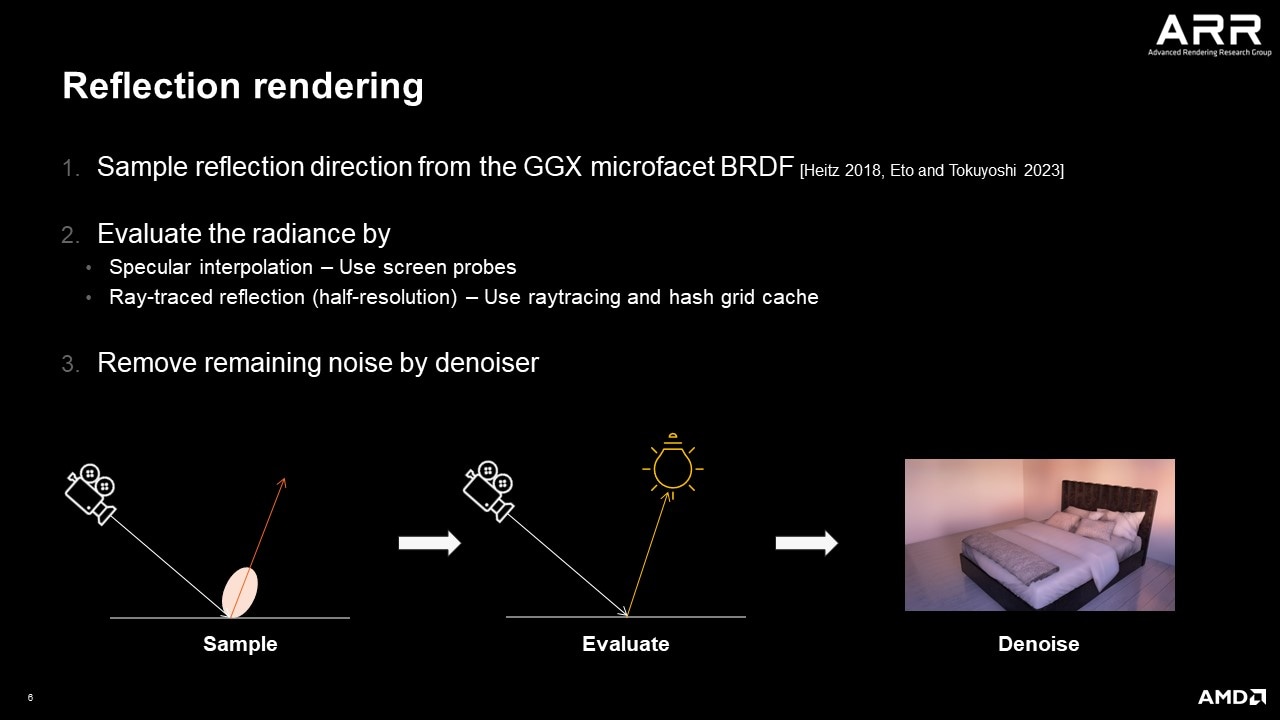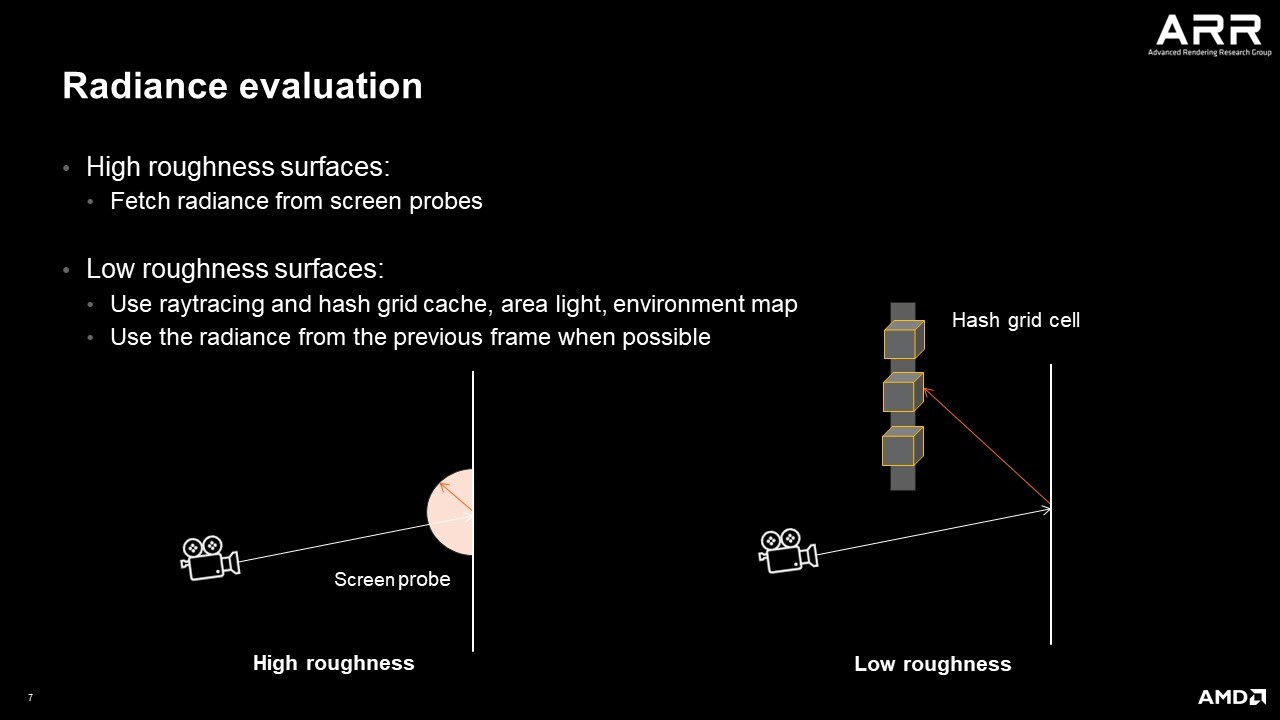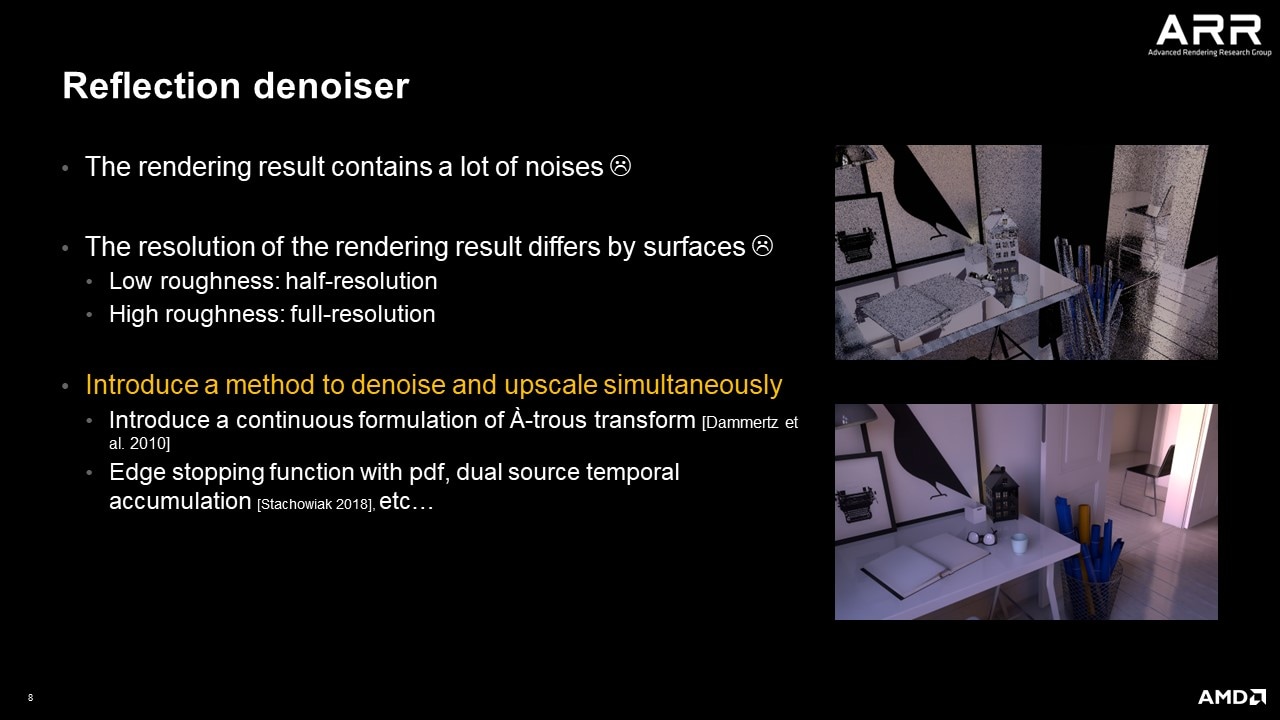
AMD Capsaicin Framework
Capsaicin is a Direct3D12 framework for real-time graphics research which implements the GI-1.0 technique and a reference path-tracer.
We are happy to announce that GI-1.1 is available now. GI-1.1 is the updated version of GI-1.0 - our real-time Global Illumination solution.
GI-1.1 includes many new updates and improvements so let’s take a look!

You can check the demo of GI-1.1 below.
In GI-1.1, we added support for rendering glossy reflections.
Like GI-1.0, GI-1.1 also targets real-time rendering applications such as video games. You can render realistic, glossy reflections in real-time. It also supports dynamic scenes such as moving objects and dynamic lighting environments.
We’ve implemented the GI-1.1 technique based on our research paper “Real-Time Rendering of Glossy Reflections Using Ray Tracing and Two-Level Radiance Caching”. We presented it at SIGGRAPH Asia 2023.
The estimation of glossy reflections is still a challenging topic in real-time rendering. In GI-1.1, we took advantage of hardware-accelerated ray tracing on modern GPUs and used additional lighting structures, which are introduced in GI-1.0, to reduce the number of required rays to estimate the lighting. We also introduced a denoiser specialized for glossy reflections to remove remaining noises from the rendered image.
Here is a short summary of how GI-1.1 works.
GI-1.1 first samples reflection ray from the GGX microfacet BRDF. Then, we evaluate the incoming radiance by two available methods: Specular interpolation and Ray-traced reflection.

Specular interpolation uses the 1st-level radiance cache: Screen probes. Ray-traced reflection uses raytracing and 2nd-level radiance cache: Hash grid cache. We dynamically change these two radiance evaluation strategies based on the roughness parameter at the shading point. It helps to render glossy reflections accurately and efficiently.

And finally, our reflection denoiser removes noises from the rendered image. Our denoiser can denoise and upscale simultaneously and enables the creation of a simple post-process pipeline for glossy reflections.

For more details, please check our technical report on GI-1.0 and our paper.
If you want to see the GI-1.1 algorithm in action or want to play with it, you can download it from the AMD Capsaicin Framework page.
